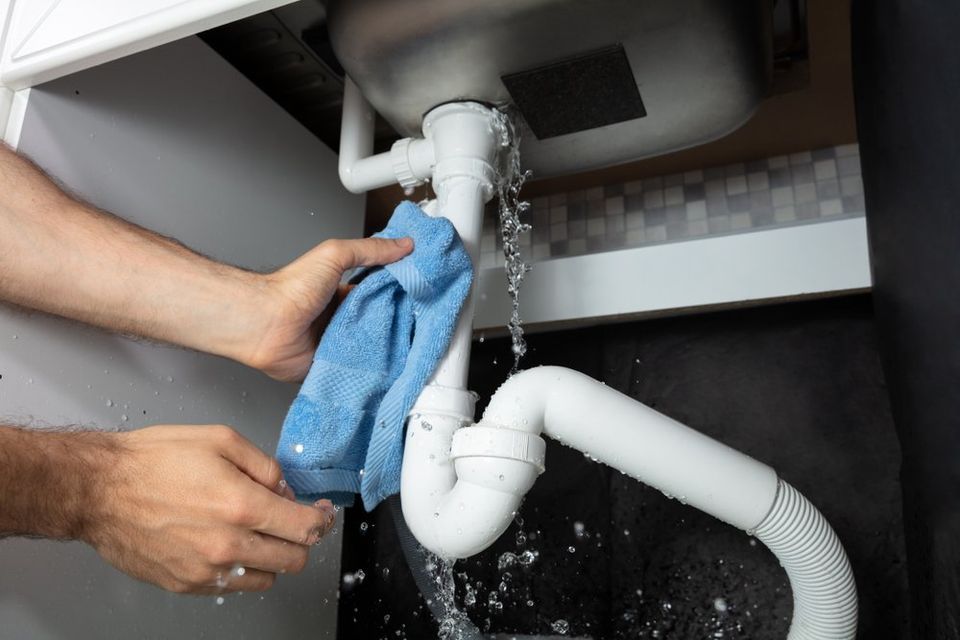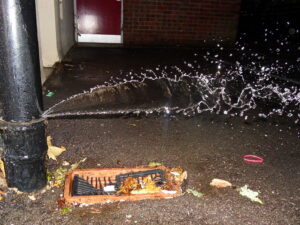We have uncovered this post involving The Do s And Don ts When Water Floods Your Home listed below on the web and believe it made sense to talk about it with you on this site.

What should you do if a water pipe ruptureds in your house? The longer you wait, the more serious the damages that can happen to your residential or commercial property. For these reasons, you require to discover just how to act in the event of a burst water pipe.
Shut Off the Main Waterline Valve
The first thing to do? Shut the shut-off shutoff. Seek the neighborhood shut-off shutoff to shut off the water in one details location only. Go for the main water line valve and transform it off if you don't recognize where the local shut-off valve is. This action will remove the water right away in your entire home. Normally, the major shutoff is found outside the house alongside the water meter. If it's not there, you can additionally locate it in 2 places: in the basement at eye degree or the 1st floor on the ground. Generally, contractors put the shut-off valve in the main ground degree washroom or ideal beside it.
Call Water Damages Remediation Pros for Aid
After shutting the water source, call the specialists for help. This situation is not something you can do some do it yourself since the pipelines required to be fixed and also there is a need to resolve the other damages to your residential property. Seek help from a trustworthy business supplying 24/7 emergency solutions if you can not deal. With their specialist help, you can prevent much bigger water damages consisting of distorted baseboards, loosened ceramic tiles, or damaged structures. Do not take this problem gently and seek professional advice for your full comfort as well as a reputable remedy.
File the Damage For Insurance
While you're waiting for the pros to get here, get some documents of the damage created by the errant pipeline. Do close-up shots of the harmed places and valuables.
Recover Things That Can Be Saved
When you're done taking pictures, take a look at the damaged things as well as obtain one of the most important ones from the pile. Dry them off in a dry/warm area far from the broken location and try to protect them as much as you can. Drag as much dampness as you can to the material so it can start to dry.
Beginning the Drying Process
Luckily, the water from your waterlines is already clean so you do not have to fret concerning sewer water. The streaming water may have interrupted the dirt and also debris in your floorboards and also carpetings. Blot out as much water as you can from the surface areas with old towels.
Specialists are the only people qualified to evaluate appropriately and fix the burs pipelines as well as succeeding damage. As constantly, pipelines do not simply instantly burst out of heaven. They typically provide quiet warnings like bubbling paint, water discolorations. Strange noises in the plumbing, caving ceiling, stuffy smell, or peeling wallpaper. Take note of these signs and do some safety nets so you can nip any type of problems in the bud.
What should you do if a water pipeline bursts in your house? For these factors, you require to discover how to act in the event of a burst water pipeline. After closing the water source, call the experts for help. With their professional assistance, you can protect against a lot bigger water damage including distorted baseboards, loose floor tiles, or harmed frameworks. Luckily, the water from your waterlines is currently tidy so you don't have to worry concerning sewage system water.
How to Handle a Burst Pipe and Minimize Damage
Steps to Take Ahead of Time
If you own property in an area that experiences cold weather, you need to be aware of seasonal maintenance tasks that will help you protect your property as the weather changes each year. One of the most important steps is to winterize your pipes to ensure they won't freeze or burst when the temperature drops. This includes action items like insulating any exposed pipes, detaching garden hoses and covering outdoor faucets. If the weather gets cold enough, you may even consider leaving a faucet dripping or opening cabinet doors during the coldest parts of the day.
No matter how prepared you might be, accidents and emergencies still happen. You'd be wise to set up a savings account specifically for your property so you have a "rainy day" fund set aside for unexpected expenses. All homes regardless of age, location or condition will inevitably need some form of emergency repair.
Steps to Take for Frozen Pipes
A frozen pipe will not necessarily burst, so if you can catch a frozen pipe early on, you could save yourself a major headache. When your area experiences frigid temperatures, be sure to check your plumbing and keep an eye out for warning signs like faucets only releasing small amounts of water or toilets not refilling when flushed. If you do run into one of these issues, you're likely dealing with a frozen pipe.
If this happens, your first step should be to cut off the water supply to that section of the plumbing. Expanding and freezing water can quickly cause damage. Even if the water supply is shut off, you will likely still deal with some leaking from the water that defrosts after the pipe has thawed. Be prepared with a mop, bucket and/or towels to quickly soak up any excess water.
In order to thaw a frozen pipe, you can use a space heater, infrared or incandescent heat lamp, or even a hairdryer to warm up the frozen area. Heat tape is also an option and should be used according to manufacturer instructions. Do not use any sort of open flame to thaw frozen pipes, as it poses a major fire hazard and can damage your pipes further.
Steps to Take for a Burst Pipe
Water damage claims are the second most common insurance claim in the U.S. When you're dealing with a frozen pipe, the water continues to expand as it freezes, which creates pressure that can cause a pipe to burst. When this happens, the crack or leak in the pipe allows water flow from the pipe to enter your home where it shouldn't. If a pipe does burst, you need to act quickly to mitigate property damage and repair cost.
Your very first step should be to shut off your main water supply to minimize flooding typically the most expensive damage to address. Once you've shut off the water supply, make sure you identify the entire area that has been impacted by the leak. Remove as much water as possible as quickly as possible using a mop, sponges, towels or a shop vacuum or wet/dry vacuum. To prevent long-term damage due to moisture build-up, run a dehumidifier or fan in the affected area. Contact a licensed plumber to ensure the pipe is correctly repaired before running any water to that section of the home again. Burst pipes and the associated water damage are something you absolutely want to avoid as a property owner. If you've had to learn your lesson the hard way, don't let yourself get caught in a similar situation during the next spell of cold weather. The best way to deal with frozen or burst pipes is to prevent them in the first place proactive winter maintenance will save you time, money and a whole lot of stress.

Do you enjoy more info about Water Damage Restoration Do s And Don t? Try to leave a short review below. We will be pleased to see your reactions about this blog post. In hopes to see you back again before long. Liked our piece? Please share it. Let others locate it. Thank you so much for going through it.
Quick service, just dial!